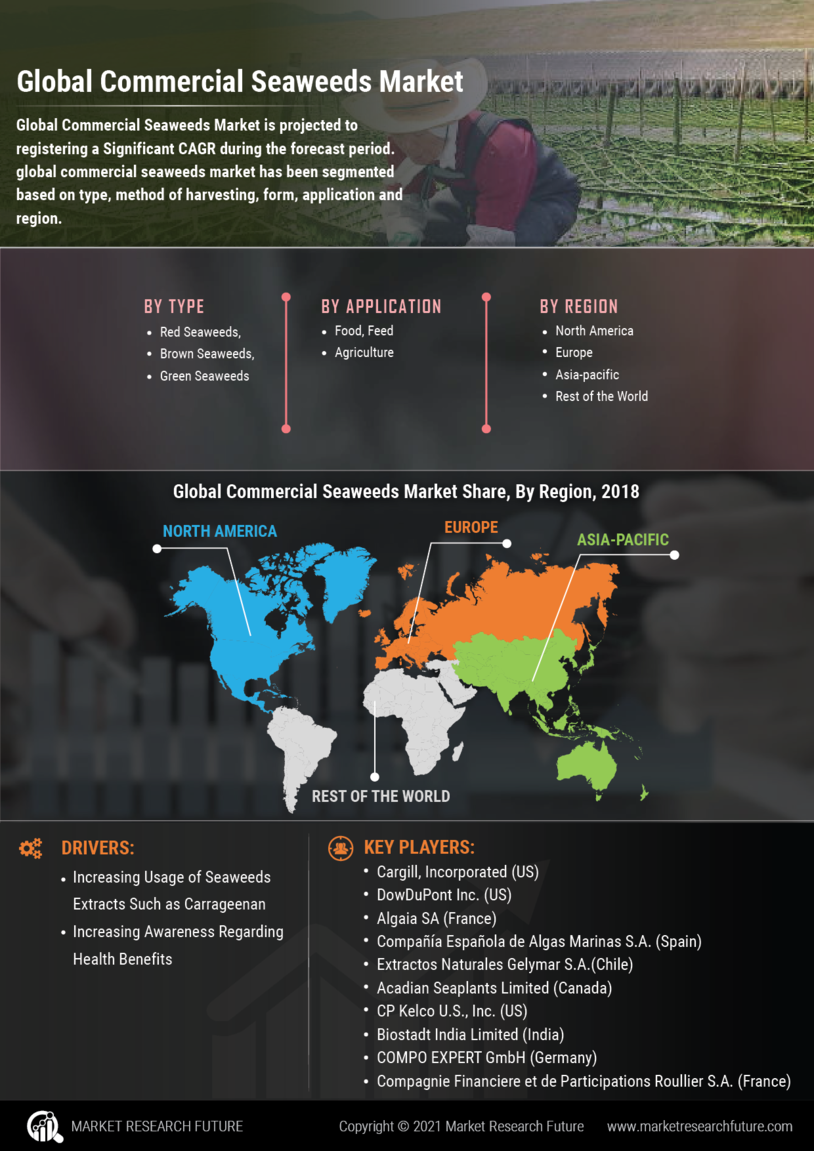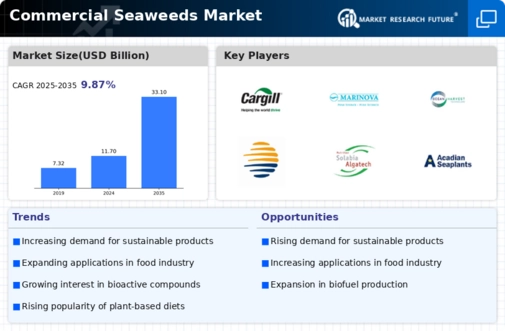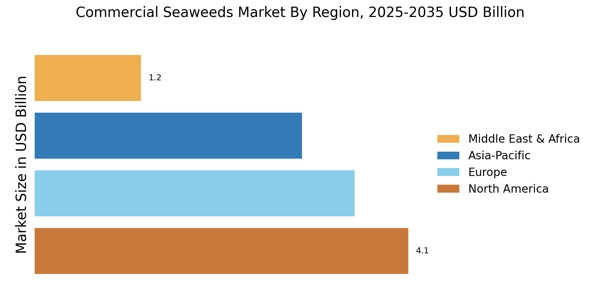Rising Demand for Plant-Based Products
The increasing consumer inclination towards plant-based diets is a notable driver for the Commercial Seaweeds Market. As more individuals seek alternatives to animal-derived products, seaweeds are gaining traction due to their rich nutrient profile, including vitamins, minerals, and antioxidants. This shift is reflected in market data, which indicates that the demand for seaweed-based food products has surged by approximately 20% over the past few years. The versatility of seaweeds in culinary applications, ranging from snacks to supplements, further enhances their appeal. Consequently, the Commercial Seaweeds Market is poised to benefit from this trend, as manufacturers innovate to create diverse offerings that cater to health-conscious consumers.
Growing Awareness of Environmental Sustainability
The heightened awareness surrounding environmental sustainability is significantly influencing the Commercial Seaweeds Market. Seaweeds are recognized for their ability to absorb carbon dioxide and contribute to ocean health, making them an attractive option for eco-conscious consumers. This trend is underscored by data suggesting that the seaweed farming sector has the potential to reduce greenhouse gas emissions by up to 30% compared to traditional agriculture. As consumers increasingly prioritize sustainable sourcing, the Commercial Seaweeds Market is likely to experience growth, with companies adopting eco-friendly practices in their production processes. This alignment with sustainability goals not only attracts consumers but also positions the industry favorably in a competitive market.
Technological Advancements in Seaweed Cultivation
Technological advancements in seaweed cultivation techniques are emerging as a pivotal driver for the Commercial Seaweeds Market. Innovations such as improved farming methods, automated harvesting, and enhanced processing technologies are streamlining production and increasing yield. These advancements are crucial, as they enable producers to meet the rising demand for seaweed products efficiently. Market analysis suggests that the implementation of these technologies could potentially increase seaweed production by up to 25% over the next few years. As the industry embraces these innovations, the Commercial Seaweeds Market is likely to witness enhanced competitiveness and profitability, positioning it favorably for future growth.
Expansion of Seaweed Applications in Various Industries
The diversification of seaweed applications across multiple industries serves as a compelling driver for the Commercial Seaweeds Market. Beyond food, seaweeds are increasingly utilized in cosmetics, pharmaceuticals, and agriculture, where they are valued for their natural properties. For instance, the cosmetics sector has seen a rise in the incorporation of seaweed extracts due to their moisturizing and anti-aging benefits. Market data indicates that the use of seaweeds in personal care products has grown by approximately 15% annually. This expansion into various sectors not only broadens the market reach but also enhances the visibility of the Commercial Seaweeds Market, attracting investments and fostering innovation.
Increased Investment in Seaweed Research and Development
The surge in investment directed towards seaweed research and development is a significant driver for the Commercial Seaweeds Market. Governments and private entities are recognizing the potential of seaweeds in addressing food security, climate change, and health issues. This influx of funding is facilitating innovative research aimed at optimizing seaweed cultivation and exploring new applications. Recent data indicates that investment in seaweed R&D has increased by approximately 30% in the last few years. Such financial backing not only accelerates technological advancements but also enhances the overall credibility of the Commercial Seaweeds Market, attracting further interest from stakeholders and consumers alike.


















Leave a Comment